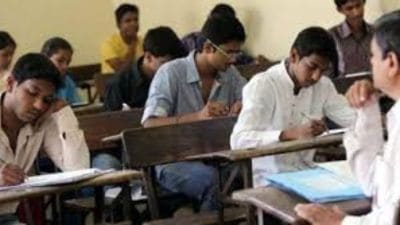- India
- International
From Kohinoor to Goddess Annapurna, why some stolen objects return and others don’t
The records of the Archaeological Survey of India show that the government has been able to retrieve 40 art objects between 2014 and 2020. However, demands for the return of objects like the Kohinoor and the Amravati marbles have been turned down.
 Hundreds of artefacts, paintings, coins, manuscripts and much else were shipped across to England by colonial officers. (Wikimedia Commons/edited by Ganrgi Singh)
Hundreds of artefacts, paintings, coins, manuscripts and much else were shipped across to England by colonial officers. (Wikimedia Commons/edited by Ganrgi Singh)An 18th century idol of Goddess Annapurna, stolen from India about a century back, will soon be making its way back to the country from Canada. The statue, holding a bowl of kheer in hand, had once adorned a temple on the riverbanks of Varanasi, and was stolen by lawyer Norman McKenzie sometime in the early 20th century. Since then, it has been part of the McKenzie art gallery collection at the University of Regina, Canada. Last week, Prime Minister Narendra Modi announced that the idol would be repatriated by the Canadian government. In a statement, University of Regina’s Vice-Chancellor Thomas Chase said the act of repatriation will help “overcome the damaging legacy of colonialism wherever possible”.
“One of the very first Indian words to enter the English language was the Hindustani slang for plunder: loot,” writes historian William Dalrymple in his most recent work, ‘The anarchy: The relentless rise of the East India Company’. The word which had originated in the plains of northern India, entered British vocabulary by the 18th century. Incidentally, that was also the time when hundreds of artefacts, paintings, coins, manuscripts and much else were shipped across to England by colonial officers.
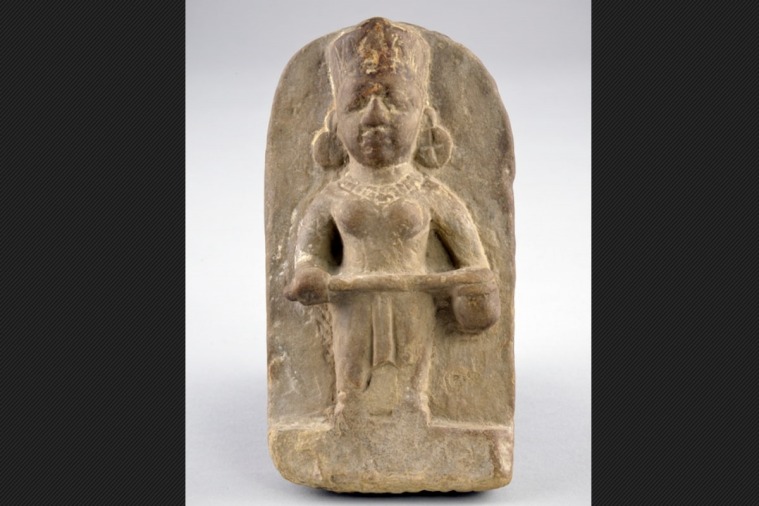 Idol of Goddess Annapurna (University of Regina)
Idol of Goddess Annapurna (University of Regina)
Dalrymple goes on to describe the colossal amount of loot made by the first governor of the Bengal presidency Robert Clive kept in the Powis Castle in Wales. “There are more Mughal artefacts stacked in this private house in the Welsh countryside than are on display in any one place in India… The riches include hookahs of varnish gold inlaid empurpled ebony, superbly inscribed Badakhshan spinels and jeweled daggers; gleaming rubies the colour of pigeon’s blood, and scatterings of lizard-green emeralds,” he writes.
But colonial loot was systematic and made to look lawful. With the Independence of the country, similar plunder continued, but now it became an act of crime. Names like Subhash Kapoor, Vijay Nanda, Deenadayalan continue to be investigated in connection with millions of dollars worth of smuggled cultural heritage. “The primary difference is in the sense of ownership. In the pre-independence period when the colonisers were doing it, there was a rhetoric of victory. It wasn’t really looting as much as a sense of entitlement,” says Samayita Banerjee, research scholar in History at Ashoka University, who has been doing extensive research on heritage conservation. “Post Independence it becomes a matter of theft as there exist laws to protect antiquities.”
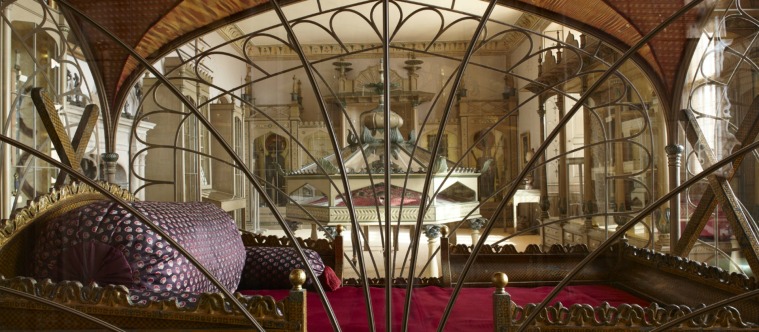 Clive museum at Powis castle. (Nationaltrust.org.uk)
Clive museum at Powis castle. (Nationaltrust.org.uk)
Over the years, thousands of artefacts of cultural importance to India have found themselves in museums and exhibitions abroad. “UNESCO has estimated that more than 50,000 art objects were smuggled out of India over the decade 1979-1989 alone,” writes international law expert Jeanette Greenfield in her book, ‘The return of international treasures’. In recent years, repatriation of stolen art objects have gained currency. The records of the Archaeological Survey of India show that the government has been able to retrieve 40 art objects between 2014 and 2020, and 75-80 art objects are in the pipeline to be returned. Yet while some return, others continue to remain in faraway lands, carrying within them an uneasy history of plunder and pillage.

Also read: The journey of an Annapurna idol, from Varanasi to Canada and back
Colonial loot abroad
“The major interpretative strategy by which India was to become known to Europeans in the 17th and 18th centuries was through a construction of a history of India,” writes anthropologist Bernard S. Cohn in his celebrated work, ‘Colonialism and its forms of knowledge.’ He notes that it was the British in the 19th century, who in an authoritative way defined what is valuable among objects found in India. “It was the patrons who created a system of classification and determined what was valuable, that which would be preserved as monuments of the past, that which was collected and placed in museums, that which could be bought and sold, that which would be taken from India as mementos and souvenirs of their own relationship to India and Indians,” he writes.
Perhaps the most significant among objects that made its way to the British Museum through this process of exploration and classification of Indian history is a Buddhist shrine, the Amravati Stupa which was established in the Guntur district of Andhra Pradesh in the 3rd century BCE. It came into public attention in the late 18th century, when Colin Mackenzie excavated and recorded it. By 1845, Sir Walter Elliot removed parts of the sculpture and kept them in the Madras Museum, from where they were transferred to London in 1859, under the assumption that it would get spoiled in India. At present, it occupies a separate gallery in the British Museum, and unlike the Kohinoor, there is hardly any political rhetoric around its retrieval.
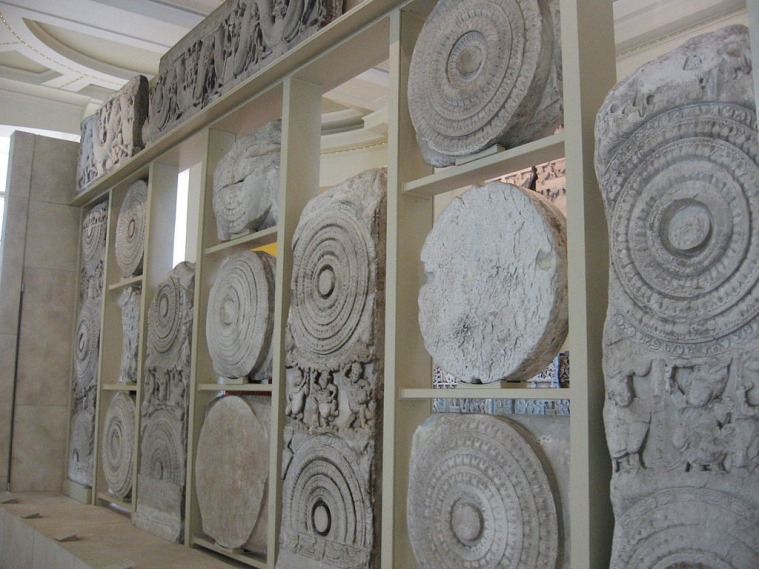 The Amravati marbles in the British museum (Wikimedia Commons)
The Amravati marbles in the British museum (Wikimedia Commons)
Mackenzie had been employed by the governor-general of India, Lord Wellesley, to conduct a survey of artefacts, oral histories and religion in South India. By the end of his career, objects collected by him included 6,218 coins, 106 images, 40 antiquities, 1,568 manuscripts, as well as copies of inscriptions and copper plates from temples. In the 1820s, after the death of Mackenzie, orientalist H H Wilson dispatched his entire collection to London. Some of these were put on display at the small museum which the Company had at its headquarters in Leadenhall Street.
The British Museum contains a large volume of Indian artefacts, a majority of which are from the collection of Major General Charles Stuart. Stuart lived in India between 1777 till his death in 1828. Nicknamed ‘Hindoo Stuart’, he was known for his fascination with Indian sculpture, primarily from Bihar, Bengal, Orissa, and central India. His collection was bought by John Bridge at an auction in London in 1829-30. The British Museum acquired the collection from his heirs in 1872.
Take a virtual tour of the exhibits here
By the end of the 18th century, a number of EIC officials had returned back to England and were actively trying to maintain the repository of Indian cultural heritage they had acquired in India. A result of this was the collection of the India Office Records in the British Library. In 1801, it purchased its first huge collection of miniature paintings from retired company servant Richard Johnson. Similar collections of paintings of Hindu deities and other religious relics were also donated or sold by other company officials like John Flaming and Francis Buchanan Hamilton.
Some of the most famous among such objects which are still in England include a white nephrite jade wine cup belonging to Shah Jahan currently in the Victoria and Albert Museum and the seventh-century Sultanganj Buddha which is in the Birmingham Museum and Art Gallery.
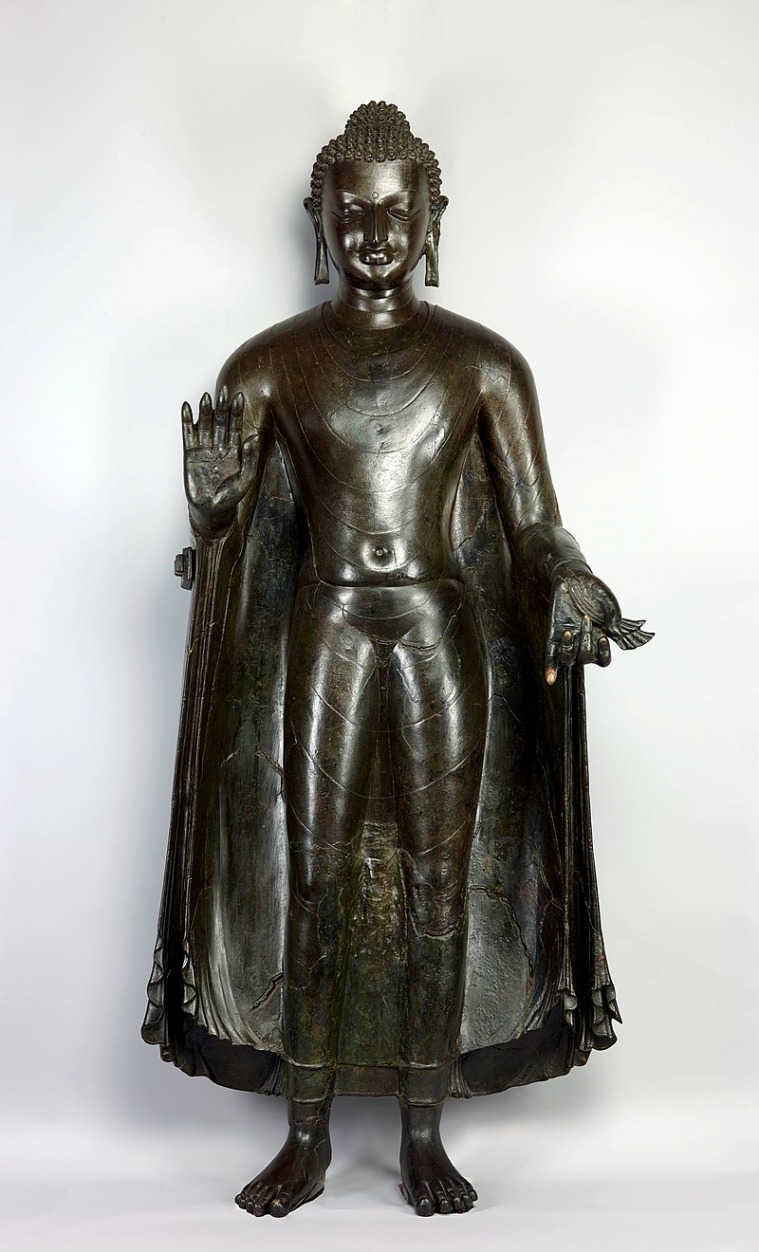 Sultanganj Buddha in the Birmingham Museum and Art Gallery (Wikimedia Commons)
Sultanganj Buddha in the Birmingham Museum and Art Gallery (Wikimedia Commons)
Then there were the war booties from India. The most famous among these of course is the Kohinoor which the British took under its possession after winning the second Anglo-Sikh war in 1849. Currently, it is on public display in the Tower of London and continues to attract political attention regarding its repatriation. But there are other such objects as well like Maharaja Ranjit Singh’s throne, decorated with rich gold sheets, also acquired during the Anglo-Sikh war. Currently, it is kept in the Victorian and Albert Museum in London. Then there is Tipu’s Tiger, an 18th-century mechanical toy that was carried away by the British when they stormed Tipu’s capital in 1799. It was later transferred to the Victorian and Albert Museum in London.
Post-independence theft of cultural heritage
Towards the end of the 19th century and the beginning of the 20th, there emerged an idea of retaining and conserving India’s past. “There emerged a growing consciousness to preserve the archaeological heritage of India. Curzon alongside John Marshall who was the director-general of the ASI were avid proponents of conservation,” explains Banerjee. Thereafter the effort to conserve the archaeological and cultural heritage of the country continued well into the period after Independence. In 1904, the Ancient Monuments Preservation Act was passed, which was followed by the Ancient Monuments and Archaeological Sites and Remains Act of 1958.
However, the exit of colonial powers ushered in a new phase of heritage theft. Archaeologist Vinay Kumar Gupta, in a research paper ‘Retrieval of Indian antiquities: Issues and challenges’, writes that the “lawful and organised looting of colonial powers changed into unlawful and disorganised looting” which was possible due to the “lack of strong anti-smuggling laws in former colonies.” He writes: “In India, the easiest target of smugglers have been the abandoned ancient temples, religious mathas, or platforms on the outskirts of villages and archaeological mounds which are illegally dug out from time to time.”
For instance, in 1976, a labourer digging up a field at Panthur village of Thanjavur district found a bronze idol of Lord Nataraja. He sold it off to a Canadian collector who in turn sent it to a curator at the British Museum. In 1991, however, the Nataraja was returned to Tamil Nadu.
Another remarkable case of heritage smuggling was that of the eight idols including the bronze Nataraja at the Brihadeshwara temple in a small village named Sripuranthan in Tamil Nadu. In 2006, they were stolen and smuggled out by the US-based art dealer Subhash Kapoor. In 2008 it was acquired by the National Gallery of Australia. After the theft was exposed, the Australian government returned the Nataraja idol along with another idol of Shiva to India in March 2014.
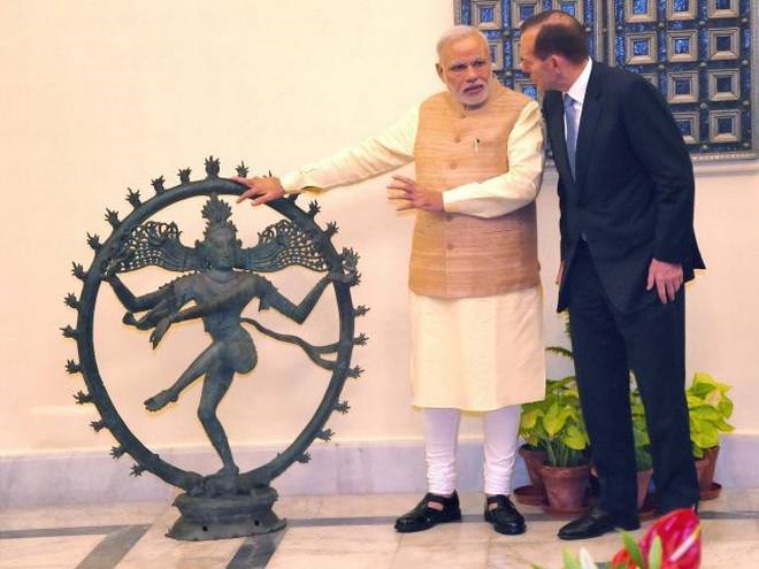 After the theft was exposed, the Australian government returned the Nataraja idol along with another idol of Shiva to India in March 2014. (PTI)
After the theft was exposed, the Australian government returned the Nataraja idol along with another idol of Shiva to India in March 2014. (PTI)
There are many other pieces of antiquities, however, that continue to remain abroad. “From Khajuraho alone over 100 erotic sculptures had been stolen from the period between 1965 and1970,” write Banerjee and research scholar Ishani Ghorai in an article for the online portal Sahapedia titled, ‘Antiquities theft and ilicit antiquities trade in India.’ They note two other famous cases of theft, one being the sensational case of burglary in the Jaipur palace museum when 2,492 medieval period paintings went missing, and the other was the 1968 theft at the National Museum in New Delhi when 125 pieces of antique jewellery and 32 rare gold coins were stolen.
Speaking about the loopholes that allow such blatant plunder of cultural heritage even today, Banerjee says, “when I do my fieldwork what comes across to me is the lack of education about heritage.” She adds, “Say a person residing at a remote village in Bengal, he would probably not know why he needs to keep a 2nd century CE bronze sculpture. Also, there is very little monetary compensation for him, if at all. That is exactly what these networks of theft exploit.”
To return or not to return
In recent times though, there has been a conscious attempt by the ASI to detect smuggled objects and by museums abroad to return stolen artefacts. In September this year, the UK returned three ancient idols of Ram, Lakshman and Sita stolen from Tamil Nadu in 1978. In 2018, the Metropolitan Museum of Art in New York announced its decision to return an eighth-century stone sculpture of Goddess Durga and a limestone sculpture dating to the third century CE. More recently, the Australian government decided to return two 15th century door guardians from Tamil Nadu and a sculpture of a serpent king from either Madhya Pradesh or Rajasthan.
At the same time, however, demands for the return of objects like the Kohinoor and the Amravati marbles have been turned down. In 2013, when British prime minister David Camaron was on a visit to India he was asked about the repatriation of the Kohinoor to which he replied that he did not support ‘returnism’ since it would empty out British museums.
Speaking about why it is more difficult for those objects which were shipped out during the colonial era to be returned, former director of antiquities in the ASI, DM Dimri says, “at that time India was part of the British empire. So an object removed from here and sent to London, was a mere shifting of location. Therefore they cannot be considered an illegal export.”
“When it comes to objects that were taken 100 or 200 years back by colonial powers, it is not clear whether we can call it stolen or not. Once it is clear that an object is stolen in the modern sense of the term, it becomes easier to return it,” says Vinod Daniel who is Chair, AusHeritage and board member of International Council of Museums (ICOM). “But a lot depends on the repatriation policy of the institution or country concerned. For instance, the Australian Museum has a clear policy that anything with social or religious significance that has been brought from another country will be returned if there is a request,” he adds.
In the last few years, growing public demand has emerged for the return of stolen objects. In 2014, two Singapore-based Indian art enthusiasts, S. Vijay Kumar and Anuraag Saxena, started the India Pride Project which uses social media to identify Indian cultural artefacts abroad and initiate their return. The group was active in ensuring that the Sripuranthan Nataraja was returned to India.
“History belongs to its geography,” says Saxena about the objective behind the project. “We are glad that through our initiative we have been able to bring this issue to public consciousness. Another impact I think we have had is to have a political consensus around this matter,” says Saxena.
Speaking about what more needs to be done to ensure that cultural heritage of the country is preserved, Saxena says, “there needs to be a national register or repository of all our heritage.” “Secondly, India needs to have a special task force that deals with this problem,” he adds. “Unless India claims what is rightfully ours, we cannot claim our place in the world.”
Further reading:
The anarchy: The relentless rise of the East India Company by William Dalrymple
The return of international treasures by Jeanette Greenfield
Colonialism and its forms of knowledge by Bernard S. Cohn
Monuments matter: India’s architectural heritage since Independence by Nayanjyot Lahiri
Retrieval of Indian antiquities: Issues and challenges by Vinay Kumar Gupta
Apr 24: Latest News
- 01
- 02
- 03
- 04
- 05











